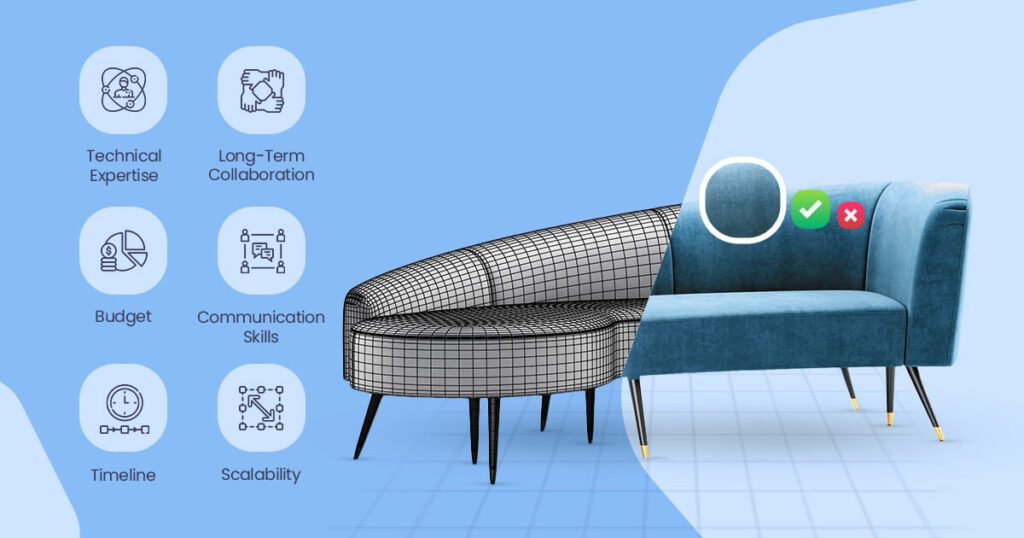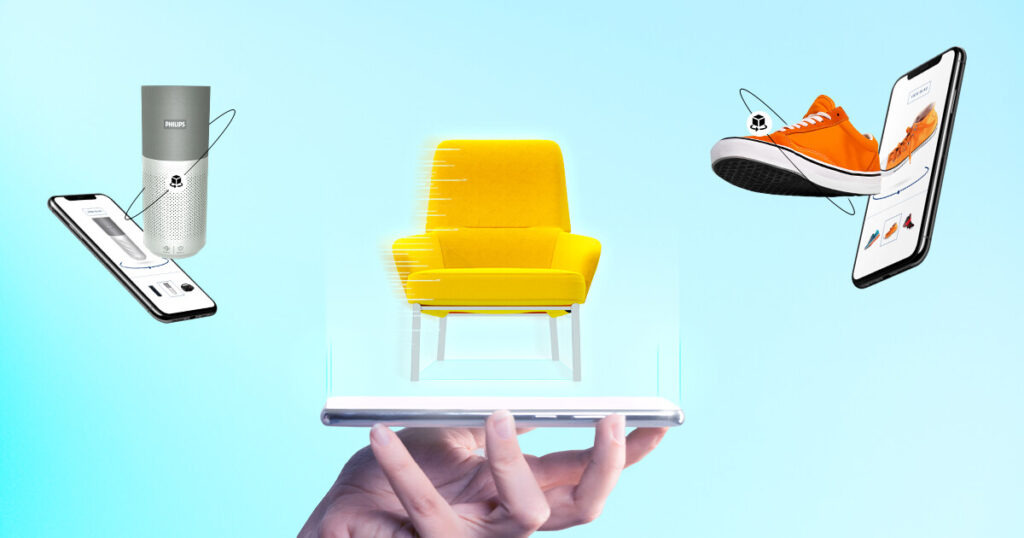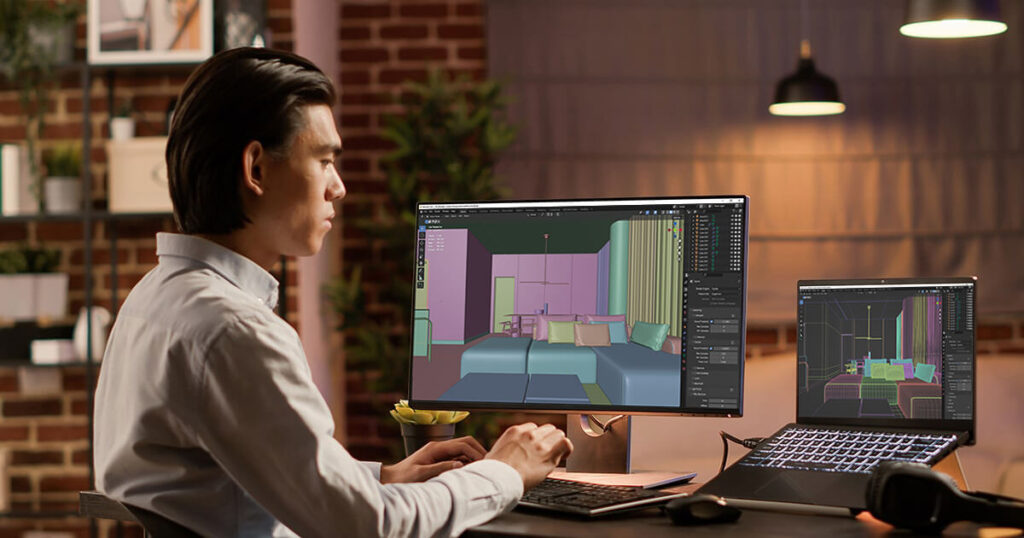3D furniture photos have ushered in a new revolution in social media marketing in the modern age. With the cumulative force on visually impressive subject matter these high-definition images have become inevitable tools for furniture brands. In today’s fast-paced digital world, people are attracted to content that is visually appealing, and social media platforms reward such posts with increased visibility. By offering a comprehensive and immersive view of furniture pieces, 3D photos empower purchasers to visualize products in their own room, finally driving engagement and sales.
The days of two-dimensional, static product images are long gone. These days, customers demand realistic and interactive experiences. That’s exactly what 3D furniture photographs offer; they let prospective buyers inspect pieces from every perspective, look closely at minute details, and even see how the furniture might look in their homes. This degree of interaction strengthens the bond between the buyer and the product, raising the possibility that they will make a purchase.
Additionally, there are numerous inventive methods to use 3D furniture photos on social media. They can be shared in immersive augmented reality experiences, used in interactive product demos, and integrated into interesting video material. Furniture manufacturers can the potential of 3D technology.
Advantages of 3D Furniture Photos in Social Media
Furniture makers have a lot to offer with 3D furniture photos, hopefully on social media.
- Enhanced visual experience: In contradict to conventional 2D pictures, 3D photos of furniture award a realistic and charming viewing experience. Customers can experiment furniture from all sides, developing a greater comprehension of the design and workmanship of the pieces.
- Versatile perspectives: With 3D ideas, showcasing furniture from various point of view and angles is simple. This makes it probable to produce engaging information that draws observation to special elements and characteristics.
- Customization galore: There are numberless customization options available with 3D furniture pictures. Companies can play with different color palettes, textures, and finishes so that customers can see how a slice would suitable into their own aesthetic.
- Boosted engagement: Content that is visually appealing and interactive has a higher possibility of drawing in and reserve viewers. Likes, shares, and comments on 3D furniture photos increment brand visibility and reach.
- Future-proof technology: With the rapid advancement of virtual and augmented reality technologies, 3D furniture photographs are ideally situated to capitalize on these fascinating prospects. Imagine offering interactive product demonstrations to customers or enabling them to virtually arrange furnishings in their homes.
Furniture producers can establish effective social media campaigns that connect with their target audience and increase sales by utilizing 3D furniture photographs.
3D Furniture: Impact on Marketing and Sales
Influence on Consumer Purchasing Decisions
3D furniture picture have totally changed how buyers connect with and view products. These picture greatly affect decisions to buy furniture since they offer a thorough and immersive perspective of the pieces.
- Reduced uncertainty: Purchaser are little likely to buy anything unsuitable because they can see how thing will look in their room.
- Enhanced product perception: Higher-ranking 3D models can make better the way a product is perceived by showcasing minute details, finishes, and materials.
- Increased confidence: Furniture that can be proved from a diversity of perspectives rise consumer confidence and trust in the brand.
The ability to reach a wider audience through the use of social media platforms
Visually charming stuff is necessary for social media success. 3D pictures and movies of furniture are very good for drawing viewers in and encouraging interaction.
- Increased brand visibility: High-quality 3D photos can much get bigger company exposure when apportion on social media sites like Facebook, and Instagram.
- Targeted audience reach: Visuals of 3D furniture are seen by bigger audience because to social media algorithms that prize visually attractive information.
- Improved customer engagement: User sharing can be cheer via interactive material in 3D images, make stronger the bond between the user and the brand.
Integration with E-commerce Platforms for Direct Sales
The online buy experience is changing as ensue of the sleek combination of 3D furniture images into e-commerce platforms.
- Enhanced product pages: Inclusive of 3D models on product sites gives clients a near, more educational look at the furnishings.
- Increased conversion rates: 3D photos have the potential to increase transformation rates by reducing product ambiguity.
- Improved customer satisfaction: On the assumption that interactive product knowledge can raise the confidentiality and satisfaction of your customers.
Occupations may create enthralling customer journey that improve sales and fosters brand attachment by utilizing 3D furniture imagery successfully.
3D Future Trends and Innovations
Advancements in 3D Technology
The rapid evolution of 3D technology is set to redefine the furniture industry. We can anticipate:
- Hyper-realistic visuals: With increasing rendering abilities, 3D furniture models will be effectively similar to their real-world counterparts, providing that clients with a never-before-seen level of actuality and detail.
- Real-time rendering: Purchasers will be allowed to experiment out different finishes, materials, and proportions in real time thanks to the revolutionary ability of quickly generating 3D images, which will variation product customization and visualization.
- AI-powered design: By speeding the design procedure and decrease time-to-market, artificial talent can be used to make design variations, optimize furniture arrangements, and even predict consumer preferences.
Integration with Social Media Platforms
Using social media to showcase 3D furniture is a great idea. Future trends include:
- Interactive social posts: More progressive social media posts with 3D models that users can pursue, zoom in on, and go around are to be expected.
- Augmented reality (AR) filters: It’s expected that social networking networks will center illuminated reality (AR) filters, which let users virtually make up furniture in their homes and improve the purchasing experience.
- User-generated content: Authentic and captivating material may be produced by encouraging consumers to divide their 3D-rendered furniture in their homes.
Potential for Virtual Showrooms and Interactive Shopping Experiences
A personalized and immersive marketing knowledge can be had using virtual showrooms.
- Immersive virtual environments: Customers can browse virtual showrooms to glance furniture in pure conditions and improve their comprehension of ratio and scale.
- Personalized product recommendations: Artificial talent (AI) can make better the shopping experience by making personalized product recommendations based on user behavior and preferences.
- Omni channel integration: Get together the excellent elements of online and offline purchasing to enable customers to engage with 3D furniture both online and in-store.
Furniture brands can stay ahead of the competition, develop stronger brand loyalty, and create engaging consumer experiences by embracing these trends.
Conclusion
The way we view and buy furniture is being revolutionized by 3D pictures of the furniture. There is no refusing their capacity to captivate audiences, provide impressive photos, and improve revenue. There is an endless amount of room for creativity in this subject as long as technology remains growing. Three-dimensional furniture is certainly the way of the future, from virtual showrooms to augmented reality experiences. Businesses are required to adopt this technology and use it in their marketing ideas if they want to stay ahead of the competition.





